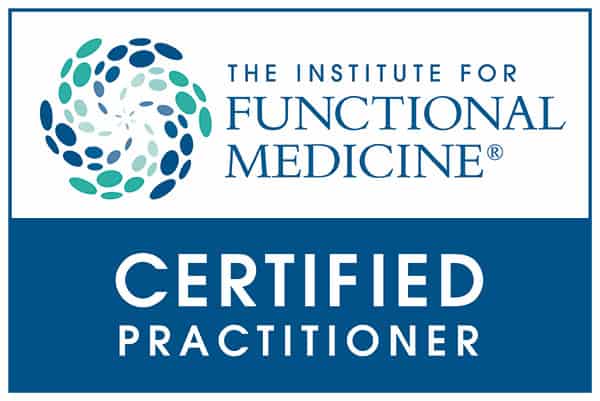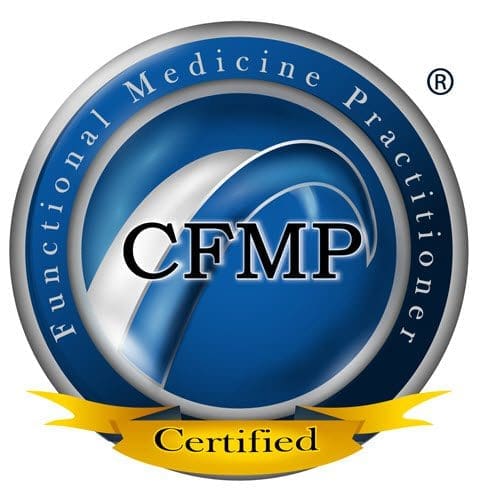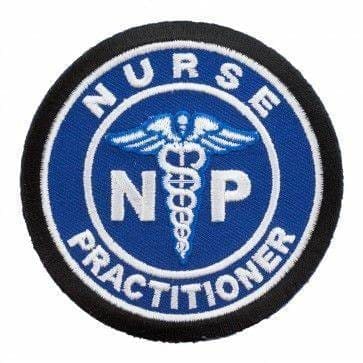Discover how oxidative stress influences the musculoskeletal system and find strategies to improve your well-being.
Contents
Chiropractic Care and Oxidative Stress: A Holistic Approach to Musculoskeletal Health
“My dear, when life throws us into a spin, like a rogue tango with a runaway tractor-trailer, we must find balance—chiropractic care is my kind of dance to soothe the body’s fiery chaos!” – Imagine Gomez Addams, with his theatrical flair, praising the wonders of chiropractic care after a fender-bender. While his passion for the dramatic might raise a chuckle, the truth is that musculoskeletal health, oxidative stress, and chiropractic care are no laughing matter. If you’ve ever felt the ache of a stiff neck or the twinge of a stubborn back after a long day—or worse, a car accident—you know how quickly discomfort can dim your spark. At El Paso Back Clinic, led by the esteemed Dr. Alexander Jimenez, DC, APRN, FNP-BC, patients find a beacon of hope through integrative, non-surgical treatments that tackle pain, inflammation, and the sneaky culprit known as oxidative stress.
In this comprehensive guide, we’ll dive deep into the science of oxidative stress, its impact on the musculoskeletal system, and how chiropractic care, combined with lifestyle tweaks, can restore harmony to your body. We’ll explore why oxidative stress is like an overzealous party guest wreaking havoc on your cells, how it fuels chronic pain, and why Dr. Jimenez’s expertise in personal injury care makes him a standout in El Paso, Texas. With a blend of clinical insights, practical tips, and a sprinkle of Gomez-inspired zest, this post will equip you with the knowledge to take charge of your health. Let’s get moving—pronto, mi amor!
What Is Oxidative Stress? The Body’s Chaotic Dance
Picture your body as a grand ballroom where molecules waltz gracefully to keep you healthy. Now, imagine free radicals—unstable, electron-hungry molecules—crashing the party, bumping into everything and causing a ruckus. These free radicals are oxygen-containing molecules with an uneven number of electrons, making them highly reactive. They’re produced naturally during metabolism, but when their numbers overwhelm your body’s antioxidants (the polite bouncers who neutralize them), you get oxidative stress. It’s like Gomez trying to tango with Morticia but tripping over Pugsley’s pet octopus—disaster ensues!
Oxidative stress is an imbalance between free radicals and antioxidants, leading to cellular damage that can affect organs, tissues, and especially the musculoskeletal system. This imbalance is implicated in over 125 clinical conditions, including chronic pain, arthritis, and even neurological symptoms like fatigue and cognitive impairment (Kellermann, 2020, as cited in). The musculoskeletal system—your bones, muscles, joints, and connective tissues—bears the brunt when oxidative stress triggers inflammation, a key player in pain and dysfunction.
Acute vs. Chronic Oxidative Stress: A Tale of Two Tangles
Not all oxidative stress is created equal. Let’s break it down:
- Acute Oxidative Stress: This is a short-term spike, like a quick flare-up after an intense workout or a minor injury. It’s your body’s way of signaling, “Hey, we need to repair some damage!” In small doses, it can even be beneficial, stimulating tissue growth and antioxidant production. Think of it as Gomez getting a bit too enthusiastic with his fencing and pulling a muscle—temporary chaos, but the body recovers with rest and care (Liguori et al., 2018, as cited in).
- Chronic Oxidative Stress: This is the real troublemaker. When free radicals pile up over time due to ongoing stressors—poor diet, smoking, environmental toxins, or untreated injuries—they wreak havoc. Chronic oxidative stress damages DNA, proteins, and lipids, leading to persistent inflammation and conditions like rheumatoid arthritis, atherosclerosis, and neurodegenerative diseases. It’s like Gomez letting Uncle Fester’s experiments run wild in the attic for years—things get messy, and the cleanup is a nightmare (Pizzino et al., 2017, as cited in).
The musculoskeletal system is particularly vulnerable because it’s a dynamic network of tissues that rely on proper blood flow, oxygenation, and cellular health. When oxidative stress disrupts these processes, it can lead to muscle fatigue, joint stiffness, and chronic pain—symptoms that chiropractic care is uniquely positioned to address.
References:
- Health Coach Clinic. (2020). Functional neurology: Inflammation, the nervous system, and oxidative stress. Retrieved from https://healthcoach.clinic/health-wellness-oxidative-stress/
- Liguori, I., Russo, G., Curcio, F., et al. (2018). Oxidative stress, aging, and diseases. Clinical Interventions in Aging, 13, 757–772. https://doi.org/10.2147/CIA.S158513
- Pizzino, G., et al. (2017). Oxidative stress: Harms and benefits for human health. Oxidative Medicine and Cellular Longevity. https://www.ncbi.nlm.nih.gov/pmc/articles/PMC5551541/
Factors Fueling Oxidative Stress in the Musculoskeletal System
Oxidative stress doesn’t just pop up out of nowhere—it’s invited to the party by a host of factors, many of which you can control. Let’s unpack the usual suspects, with a nod to Gomez’s flair for drama: “Each one’s a villain, my dear, plotting against our vitality!”
- Poor Diet: A diet high in processed foods, sugars, and unhealthy fats is like serving Gomez a plate of plain oatmeal—utterly uninspiring and harmful. These foods lack antioxidants and promote inflammation, increasing free radical production. Conversely, colorful fruits, vegetables, and nuts (rich in antioxidants like glutathione) help neutralize free radicals (Ring, as cited in).
- Environmental Toxins: Pollution, pesticides, and UV radiation are like Lurch’s grumpy cousins crashing the Addams’ mansion. They generate free radicals, especially in urban areas like El Paso, where air quality can be a concern. Limiting exposure and using protective measures like sunscreen can help (Healthline, 2024, as cited in).
- Physical Stress and Injuries: Motor vehicle accidents (MVAs), sports injuries, or even repetitive strain can trigger oxidative stress. The trauma causes inflammation, which ramps up free radical production. This is especially relevant in personal injury cases, where untreated injuries can lead to chronic oxidative stress and prolonged pain (El Paso Back Clinic, n.d., as cited in).
- Sedentary Lifestyle: Sitting too long is like Gomez refusing to dance—stagnation sets in. Lack of exercise reduces antioxidant production and impairs circulation, allowing free radicals to accumulate (Healthline, 2024, as cited in).
- Mental Stress: Chronic stress or anxiety is like Gomez worrying about Morticia’s safety—it elevates cortisol, which fuels oxidative stress. This can manifest as muscle tension and pain, further taxing the musculoskeletal system (Loeser, as cited in).
- Smoking and Alcohol: These habits are like inviting Gomez’s chain-smoking cousin to the party—they flood the body with free radicals, damaging tissues and exacerbating inflammation (Pizzino et al., 2017, as cited in).
- Gut Dysbiosis: An imbalanced gut microbiome, often caused by poor diet or antibiotics, can increase oxidative stress. The gut produces inflammatory cytokines that spill over into the musculoskeletal system, worsening pain and stiffness (Fioranelli et al., 2022, as cited in https://pubmed.ncbi.nlm.nih.gov/35411081/).
- Chronic Diseases: Conditions like diabetes, hypertension, and inflammatory bowel disease amplify oxidative stress, creating a vicious cycle of inflammation and tissue damage (Sallam & Laher, 2020, as cited in https://pubmed.ncbi.nlm.nih.gov/33383820/).
By addressing these factors, you can keep oxidative stress from turning your body into a chaotic Addams Family reunion. Chiropractic care, as we’ll see, plays a starring role in this effort.
References:
- El Paso Back Clinic. (n.d.). Musculoskeletal injury treatment after car accidents. Retrieved from https://elpasobackclinic.com/
- Healthline. (2024). Oxidative stress: Definition, effects on the body, and prevention. Retrieved from https://www.healthline.com/health/oxidative-stress
- Fioranelli, M., et al. (2022). Gut microbiota, diet, and chronic diseases: The role played by oxidative stress. Oxidative Medicine and Cellular Longevity. https://pubmed.ncbi.nlm.nih.gov/35411081/
- Sallam, N., & Laher, I. (2020). Oxidative stress and redox-modulating therapeutics in inflammatory bowel disease. Trends in Molecular Medicine, 26(8), 748–763. https://pubmed.ncbi.nlm.nih.gov/33383820/
- Loeser, R. (2025). Oxidative stress: Causes, symptoms, & how to reduce it. Women’s Health Magazine. Retrieved from https://www.womenshealthmag.com/health/a39922550/oxidative-stress/
- Pizzino, G., et al. (2017). Oxidative stress: Harms and benefits for human health. Oxidative Medicine and Cellular Longevity. https://www.ncbi.nlm.nih.gov/pmc/articles/PMC5551541/
How Oxidative Stress Affects the Musculoskeletal System
The musculoskeletal system is like the scaffolding of Gomez’s beloved mansion—strong, but vulnerable to damage if not maintained. Oxidative stress undermines this scaffolding by:
- Damaging Muscle Tissue: Free radicals attack muscle cells, leading to fatigue, weakness, and delayed recovery after injuries. This is common in MVAs, where whiplash or soft tissue injuries trigger oxidative stress, prolonging pain (El Paso Back Clinic, n.d., as cited in).
- Promoting Joint Inflammation: In conditions like rheumatoid arthritis or osteoarthritis, oxidative stress fuels inflammation, eroding cartilage and causing stiffness. The resulting pain can limit mobility, creating a cycle of inactivity and worsening health (Loeser, as cited in).
- Impairing Bone Health: Oxidative stress disrupts bone remodeling, increasing the risk of osteoporosis or fractures, especially in older adults (Liguori et al., 2018, as cited in).
- Triggering Nerve Dysfunction: The nervous system, closely tied to the musculoskeletal system, suffers when oxidative stress damages neurons, leading to symptoms like numbness, tingling, or radiating pain (Kellermann, 2020, as cited in).
These effects overlap with pain-like symptoms—stiffness, soreness, and reduced range of motion—that chiropractic care can address. By reducing inflammation and restoring biomechanical function, chiropractic adjustments help break the cycle of oxidative stress and pain.
References:
- El Paso Back Clinic. (n.d.). Chiropractic care for motor vehicle accident recovery. Retrieved from https://elpasobackclinic.com/
- Kellermann, G. (2020). Inflammation and oxidative stress: Major players in clinical conditions. Functional Medicine University. Retrieved from https://healthcoach.clinic/health-wellness-oxidative-stress/
- Liguori, I., et al. (2018). Oxidative stress, aging, and diseases. Clinical Interventions in Aging, 13, 757–772. https://doi.org/10.2147/CIA.S158513
- Loeser, R. (2025). Oxidative stress: Causes, symptoms, & how to reduce it. Women’s Health Magazine. Retrieved from https://www.womenshealthmag.com/health/a39922550/oxidative-stress/
Chiropractic Care: The Tango to Tame Oxidative Stress
Chiropractic care is like Gomez sweeping Morticia into a perfect dip—it restores balance and grace to a body thrown off-kilter. At El Paso Back Clinic, Dr. Alexander Jimenez uses a holistic approach to tackle oxidative stress and its musculoskeletal fallout. Here’s how chiropractic care, combined with integrative therapies, makes a difference:
1. Spinal Adjustments to Reduce Inflammation
Chiropractic adjustments realign the spine, reducing pressure on nerves and improving blood flow. This enhances oxygen delivery to tissues, helping to neutralize free radicals and curb inflammation. By addressing subluxations (misalignments), chiropractic care alleviates stress on the musculoskeletal system, which can otherwise exacerbate oxidative stress (El Paso Back Clinic, n.d., as cited in).
2. Massage Therapy for Muscle Recovery
Massage therapy, often paired with chiropractic care, reduces muscle tension and promotes circulation. This helps flush out inflammatory byproducts and supports antioxidant activity, easing oxidative stress-related pain (El Paso Back Clinic, n.d., as cited in).
3. Nutritional Guidance to Boost Antioxidants
Dr. Jimenez emphasizes functional nutrition, recommending antioxidant-rich foods like berries, spinach, and nuts to combat oxidative stress. Supplements like berberine or N-acetylcysteine may also be suggested to enhance antioxidant defenses (Rodriguez Arciniega, as cited in).
4. Exercise and Mobility Training
Moderate exercise, tailored to the patient’s condition, boosts natural antioxidant production and improves musculoskeletal health. Dr. Jimenez’s team at El Paso Back Clinic designs personalized plans to enhance mobility and reduce oxidative stress (Healthline, 2024, as cited in).
5. Stress Management Techniques
Chronic stress fuels oxidative stress, so Dr. Jimenez incorporates relaxation techniques like mindfulness or breathing exercises. These reduce cortisol levels, easing the burden on the musculoskeletal system (Loeser, as cited in).
Clinical Rationale: Why It Works
Chiropractic care addresses the root causes of oxidative stress by restoring biomechanical function and reducing inflammation. Adjustments improve nerve signaling, which regulates immune responses and reduces inflammatory cytokines linked to oxidative stress (Fioranelli et al., 2022, as cited in https://pubmed.ncbi.nlm.nih.gov/35411081/). By enhancing circulation and tissue repair, chiropractic care helps the body clear free radicals more effectively, breaking the cycle of chronic pain and oxidative damage.
References:
- El Paso Back Clinic. (n.d.). Chiropractic care methods for joint and biomechanical restoration. Retrieved from https://elpasobackclinic.com/
- Healthline. (2024). Oxidative stress: Definition, effects on the body, and prevention. Retrieved from https://www.healthline.com/health/oxidative-stress
- Rodríguez Arciniega, A. P. (2020). Berberine: Inflammation and oxidative stress. Frontiers in Pharmacology, 9, 782. Retrieved from https://healthcoach.clinic/health-wellness-oxidative-stress/
- Fioranelli, M., et al. (2022). Gut microbiota, diet, and chronic diseases: The role played by oxidative stress. Oxidative Medicine and Cellular Longevity. https://pubmed.ncbi.nlm.nih.gov/35411081/
- Loeser, R. (2025). Oxidative stress: Causes, symptoms, & how to reduce it. Women’s Health Magazine. Retrieved from https://www.womenshealthmag.com/health/a39922550/oxidative-stress/
Home Exercises for Pain Relief- Video
Dr. Alexander Jimenez: El Paso’s Personal Injury Expert
In El Paso, Texas, personal injury cases—especially those involving motor vehicle accidents (MVAs)—are all too common. Whether it’s a fender-bender on I-10 or a collision with an 18-wheeler, the aftermath can leave victims with musculoskeletal injuries, oxidative stress, and a mountain of medical and legal challenges. Enter Dr. Alexander Jimenez, a distinguished practitioner whose expertise bridges clinical care and legal support.
Why Dr. Jimenez Stands Out
Dr. Jimenez, with his dual credentials as a Doctor of Chiropractic (DC) and Family Nurse Practitioner (FNP-BC), brings a unique perspective to personal injury cases. His approach combines:
- Advanced Imaging and Diagnostics: Using X-rays, MRIs, and other tools, Dr. Jimenez pinpoints the extent of musculoskeletal injuries, from whiplash to spinal misalignments. This ensures accurate diagnoses and tailored treatment plans (El Paso Back Clinic, n.d., as cited in).
- Dual-Scope Procedures: As both a chiropractor and nurse practitioner, Dr. Jimenez integrates medical and chiropractic care, addressing both acute pain and underlying oxidative stress. This dual expertise allows for comprehensive recovery plans (Jimenez, A., n.d., as cited in https://www.linkedin.com/in/dralexjimenez/).
- Legal Liaison: Dr. Jimenez acts as a bridge between patients and legal teams, providing detailed medical reports and expert testimony. His documentation of injuries, supported by advanced diagnostics, strengthens personal injury claims, ensuring victims receive fair compensation (El Paso Back Clinic, n.d., as cited in).
Personal Injury and Oxidative Stress
MVAs often cause soft tissue injuries, spinal misalignments, and gastrointestinal issues, all of which can trigger oxidative stress. For example, whiplash-associated disorders (WAD) lead to inflammation and free radical production, prolonging recovery if untreated (El Paso Back Clinic, n.d., as cited in). Dr. Jimenez’s integrative approach—combining chiropractic adjustments, nutritional counseling, and rehabilitation—addresses these issues holistically, reducing oxidative stress and promoting healing.
References:
- El Paso Back Clinic. (n.d.). Auto accident insights for safe driving and recovering from WAD. Retrieved from https://elpasobackclinic.com/
- Jimenez, A. (n.d.). LinkedIn profile. Retrieved from https://www.linkedin.com/in/dralexjimenez/
Small Changes, Big Impact: Lifestyle Tips to Reduce Oxidative Stress
You don’t need to overhaul your life to combat oxidative stress—small, intentional changes can make a big difference. Here are practical tips, inspired by Dr. Jimenez’s clinical insights, to keep your musculoskeletal system in tip-top shape:
- Eat the Rainbow: Load up on antioxidant-rich foods like blueberries, kale, and walnuts. These are like Gomez’s love letters to Morticia—bursting with passion and protection for your cells (Healthline, 2024, as cited in).
- Move Your Body: Aim for 30 minutes of moderate exercise, like walking or yoga, most days. It’s like dancing a slow tango to keep your joints limber and antioxidants flowing (Liguori et al., 2018, as cited in).
- Sleep Like Lurch: Prioritize 7–8 hours of quality sleep to reduce oxidative stress and support muscle recovery. Think of it as recharging your body’s batteries (Healthline, 2024, as cited in).
- Stress Less: Practice mindfulness or deep breathing to lower cortisol. It’s like Gomez calming down after a swordfight gone wrong (Loeser, as cited in).
- Avoid Toxins: Quit smoking, limit alcohol, and use natural cleaning products to reduce free radical exposure. Your body will thank you, just like Morticia appreciates Gomez’s devotion (Pizzino et al., 2017, as cited in).
- Stay Hydrated: Water helps flush out toxins and supports cellular health. Think of it as giving your muscles a refreshing dip in the Addams’ swamp (Ring, as cited in).
- Consider Supplements: Under Dr. Jimenez’s guidance, supplements like vitamin C or berberine can boost antioxidant defenses, especially for those recovering from injuries (Rodriguez Arciniega, as cited in).
By weaving these habits into your routine, you can reduce oxidative stress and keep your musculoskeletal system as spry as Gomez on a good day.
References:
- Healthline. (2024). Oxidative stress: Definition, effects on the body, and prevention. Retrieved from https://www.healthline.com/health/oxidative-stress
- Liguori, I., et al. (2018). Oxidative stress, aging, and diseases. Clinical Interventions in Aging, 13, 757–772. https://doi.org/10.2147/CIA.S158513[](https://pursuewellness.us/2022/04/oxidative-stress-and-antioxidants/)
- Pizzino, G., et al. (2017). Oxidative stress: Harms and benefits for human health. Oxidative Medicine and Cellular Longevity. https://www.ncbi.nlm.nih.gov/pmc/articles/PMC5551541/
- Rodríguez Arciniega, A. P. (2020). Berberine: Inflammation and oxidative stress. Frontiers in Pharmacology, 9, 782. Retrieved from https://healthcoach.clinic/health-wellness-oxidative-stress/
- Loeser, R. (2025). Oxidative stress: Causes, symptoms, & how to reduce it. Women’s Health Magazine. Retrieved from https://www.womenshealthmag.com/health/a39922550/oxidative-stress/
- Ring, M. (2025). Oxidative stress: Causes, symptoms, & how to reduce it. Women’s Health Magazine. Retrieved from https://www.womenshealthmag.com/health/a39922550/oxidative-stress/
Conclusion and Disclaimer
Oxidative stress is a formidable foe, but with chiropractic care, nutritional strategies, and lifestyle changes, you can keep it in check. At El Paso Back Clinic, Dr. Alexander Jimenez offers a beacon of hope for those battling musculoskeletal pain and personal injuries. His integrative approach—rooted in advanced diagnostics, chiropractic expertise, and a passion for holistic healing—helps patients reclaim their vitality. By addressing oxidative stress and its impact on the musculoskeletal system, Dr. Jimenez empowers individuals to live healthier, pain-free lives.
Disclaimer: This blog post is intended for informational purposes only and should not be taken as medical advice. Always consult a qualified healthcare professional, such as Dr. Alexander Jimenez, before starting any treatment or making significant lifestyle changes. The information provided is based on current research and clinical insights, but is not a substitute for personalized medical care. For those in El Paso, Texas, seeking expert care for personal injuries or musculoskeletal issues, contact El Paso Back Clinic at 915-850-0900 or visit https://elpasobackclinic.com/ for a consultation.
References:
- El Paso Back Clinic. (n.d.). Chiropractic care for motor vehicle accident recovery. Retrieved from https://elpasobackclinic.com/
- Health Coach Clinic. (2020). Functional neurology: Inflammation, the nervous system, and oxidative stress. Retrieved from https://healthcoach.clinic/health-wellness-oxidative-stress/
- Pizzino, G., et al. (2017). Oxidative stress: Harms and benefits for human health. Oxidative Medicine and Cellular Longevity. https://www.ncbi.nlm.nih.gov/pmc/articles/PMC5551541/
- Rodríguez Arciniega, A. P. (2020). Berberine: Inflammation and oxidative stress. Frontiers in Pharmacology, 9, 782. Retrieved from https://healthcoach.clinic/health-wellness-oxidative-stress/
- Liguori, I., et al. (2018). Oxidative stress, aging, and diseases. Clinical Interventions in Aging, 13, 757–772. https://doi.org/10.2147/CIA.S158513
- Loeser, R. (2025). Oxidative stress: Causes, symptoms, & how to reduce it. Women’s Health Magazine. Retrieved from https://www.womenshealthmag.com/health/a39922550/oxidative-stress/
- Fioranelli, M., et al. (2022). Gut microbiota, diet, and chronic diseases: The role played by oxidative stress. Oxidative Medicine and Cellular Longevity. https://pubmed.ncbi.nlm.nih.gov/35411081/
- Sallam, N., & Laher, I. (2020). Oxidative stress and redox-modulating therapeutics in inflammatory bowel disease. Trends in Molecular Medicine, 26(8), 748–763. https://pubmed.ncbi.nlm.nih.gov/33383820/
- Jimenez, A. (n.d.). LinkedIn profile. Retrieved from https://www.linkedin.com/in/dralexjimenez/
General Disclaimer, Licenses and Board Certifications *
Professional Scope of Practice *
The information herein on "Oxidative Stress & Musculoskeletal System Connections Unveiled" is not intended to replace a one-on-one relationship with a qualified health care professional or licensed physician and is not medical advice. We encourage you to make healthcare decisions based on your research and partnership with a qualified healthcare professional.
Blog Information & Scope Discussions
Welcome to El Paso's Premier Wellness and Injury Care Clinic & Wellness Blog, where Dr. Alex Jimenez, DC, FNP-C, a Multi-State board-certified Family Practice Nurse Practitioner (FNP-BC) and Chiropractor (DC), presents insights on how our multidisciplinary team is dedicated to holistic healing and personalized care. Our practice aligns with evidence-based treatment protocols inspired by integrative medicine principles, similar to those on this site and on our family practice-based chiromed.com site, focusing on naturally restoring health for patients of all ages.
Our areas of multidisciplinary practice include Wellness & Nutrition, Chronic Pain, Personal Injury, Auto Accident Care, Work Injuries, Back Injury, Low Back Pain, Neck Pain, Migraine Headaches, Sports Injuries, Severe Sciatica, Scoliosis, Complex Herniated Discs, Fibromyalgia, Chronic Pain, Complex Injuries, Stress Management, Functional Medicine Treatments, and in-scope care protocols.
Our information scope is multidisciplinary, focusing on musculoskeletal and physical medicine, wellness, contributing etiological viscerosomatic disturbances within clinical presentations, associated somato-visceral reflex clinical dynamics, subluxation complexes, sensitive health issues, and functional medicine articles, topics, and discussions.
We provide and present clinical collaboration with specialists from various disciplines. Each specialist is governed by their professional scope of practice and their jurisdiction of licensure. We use functional health & wellness protocols to treat and support care for musculoskeletal injuries or disorders.
Our videos, posts, topics, and insights address clinical matters and issues that are directly or indirectly related to our clinical scope of practice.
Our office has made a reasonable effort to provide supportive citations and has identified relevant research studies that support our posts. We provide copies of supporting research studies upon request to regulatory boards and the public.
We understand that we cover matters that require an additional explanation of how they may assist in a particular care plan or treatment protocol; therefore, to discuss the subject matter above further, please feel free to ask Dr. Alex Jimenez, DC, APRN, FNP-BC, or contact us at 915-850-0900.
We are here to help you and your family.
Blessings
Dr. Alex Jimenez DC, MSACP, APRN, FNP-BC*, CCST, IFMCP, CFMP, ATN
email: coach@elpasofunctionalmedicine.com
Multidisciplinary Licensing & Board Certifications:
Licensed as a Doctor of Chiropractic (DC) in Texas & New Mexico*
Texas DC License #: TX5807, Verified: TX5807
New Mexico DC License #: NM-DC2182, Verified: NM-DC2182
Multi-State Advanced Practice Registered Nurse (APRN*) in Texas & Multi-States
Multi-state Compact APRN License by Endorsement (42 States)
Texas APRN License #: 1191402, Verified: 1191402 *
Florida APRN License #: 11043890, Verified: APRN11043890 *
License Verification Link: Nursys License Verifier
* Prescriptive Authority Authorized
ANCC FNP-BC: Board Certified Nurse Practitioner*
Compact Status: Multi-State License: Authorized to Practice in 40 States*
Graduate with Honors: ICHS: MSN-FNP (Family Nurse Practitioner Program)
Degree Granted. Master's in Family Practice MSN Diploma (Cum Laude)
Dr. Alex Jimenez, DC, APRN, FNP-BC*, CFMP, IFMCP, ATN, CCST
My Digital Business Card
Licenses and Board Certifications:
DC: Doctor of Chiropractic
APRNP: Advanced Practice Registered Nurse
FNP-BC: Family Practice Specialization (Multi-State Board Certified)
RN: Registered Nurse (Multi-State Compact License)
CFMP: Certified Functional Medicine Provider
MSN-FNP: Master of Science in Family Practice Medicine
MSACP: Master of Science in Advanced Clinical Practice
IFMCP: Institute of Functional Medicine
CCST: Certified Chiropractic Spinal Trauma
ATN: Advanced Translational Neutrogenomics
Memberships & Associations:
TCA: Texas Chiropractic Association: Member ID: 104311
AANP: American Association of Nurse Practitioners: Member ID: 2198960
ANA: American Nurse Association: Member ID: 06458222 (District TX01)
TNA: Texas Nurse Association: Member ID: 06458222
NPI: 1205907805
| Primary Taxonomy | Selected Taxonomy | State | License Number |
|---|---|---|---|
| No | 111N00000X - Chiropractor | NM | DC2182 |
| Yes | 111N00000X - Chiropractor | TX | DC5807 |
| Yes | 363LF0000X - Nurse Practitioner - Family | TX | 1191402 |
| Yes | 363LF0000X - Nurse Practitioner - Family | FL | 11043890 |








